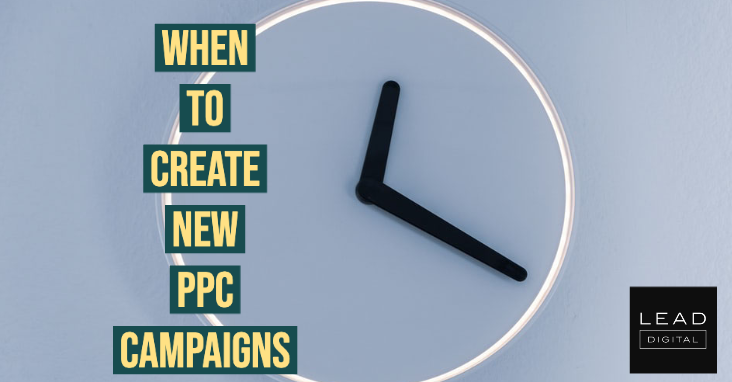 The world of paid search is unique for all account managers, every account, and so forth. No two accounts managers are identical in the way that they strategize and no two accounts are identical in terms of what optimizations and changes should be made. With that being said, generalizations can be made and then altered with the account in mind.
The world of paid search is unique for all account managers, every account, and so forth. No two accounts managers are identical in the way that they strategize and no two accounts are identical in terms of what optimizations and changes should be made. With that being said, generalizations can be made and then altered with the account in mind.
In this post, we will discuss at which point new paid search campaigns should be created and the process behind it. This is from my time as an account manager and may vary by account vertical, platform, and network.
For the sake of this post, we will focus on three networks within Google: Search, Shopping, and Display.
Search
For search, a few scenarios for creating a new campaign include;
- You have no search campaigns. This may be obvious but search is going to be lower funnel traffic as users are actively searching. If you are looking to make a sale or generate a lead, search should be your first touchpoint.
- A new product was released. Sometimes products are released and are nearly identical to products already around, which may not require new keywords. For example, if you sell a dress in black and the dress is now made in white, it’s probably not going to require a new campaign but rather just a few additional keywords. However, on the flip-side, if you recently only sold dresses and now you are going to offer men’s shirts, a new campaign would be needed.
- You expanded to other locations. I highly encourage segmenting campaigns by larger geographic regions. For example, if you offer your services in the US but expand to the UK, it makes sense to create a new campaign for the UK rather than targeting the UK and the US in the same campaign. This allows for more control over dayparting, bids, keyword language, creative, etc.
- Traffic. When it comes to traffic, as an account manager, you will need to use your knowledge and past experience to determine if a new campaign is needed. One example would be if the campaign budget is limited and additional budget can’t be justified at the campaign level because performance goals aren’t being met. If you then look at the ad group level, if one ad group is performing better than the campaign as a whole, it may make sense to pull that ad group out in order to increase spend and drive additional traffic to those keywords.
The above can be applied to other search platforms, such as Bing, as well!
Shopping
For shopping, the article linked in the header gives a great breakdown of how to structure shopping campaigns. Some rationale for creating a new shopping campaign include;
- You have no shopping campaigns. Again, this may be obvious but shopping is going to be lower funnel traffic as users are actively searching. If you are looking to make a sale, shopping should be another campaign type that is launched early on, as it allows for more ad real estate to be filled and gives users a visually appealing ad to draw them to your site.
- New Product Categories. This is entirely dependent on how your campaigns are segmented. If you have all of your products in one campaign, you will want to ensure new products are active but it may not require a new campaign. On the flip-side, if you have a catch-all campaign (as mentioned in the article linked above) and higher priority campaigns, you will want to consider if a new campaign should be launched. This could be determined by the amount of traffic generated to the products via the catch-all campaign or if the product is a high priority for the business as a whole.
- Promotions. If you have promotions running, it may be beneficial to think about new shopping campaigns. The reason being is that it’ll allow for more control over the traffic specifically going to a group of products. For example, if you sell a tablet that’s on sale for the month of December, by creating a campaign specifically for the tablet promotion, you will be able to exclude specific searches and allocate as much (or as little) spend to the campaign as you want.
The above can be applied to other search platforms, such as Bing, as well! – Read more



